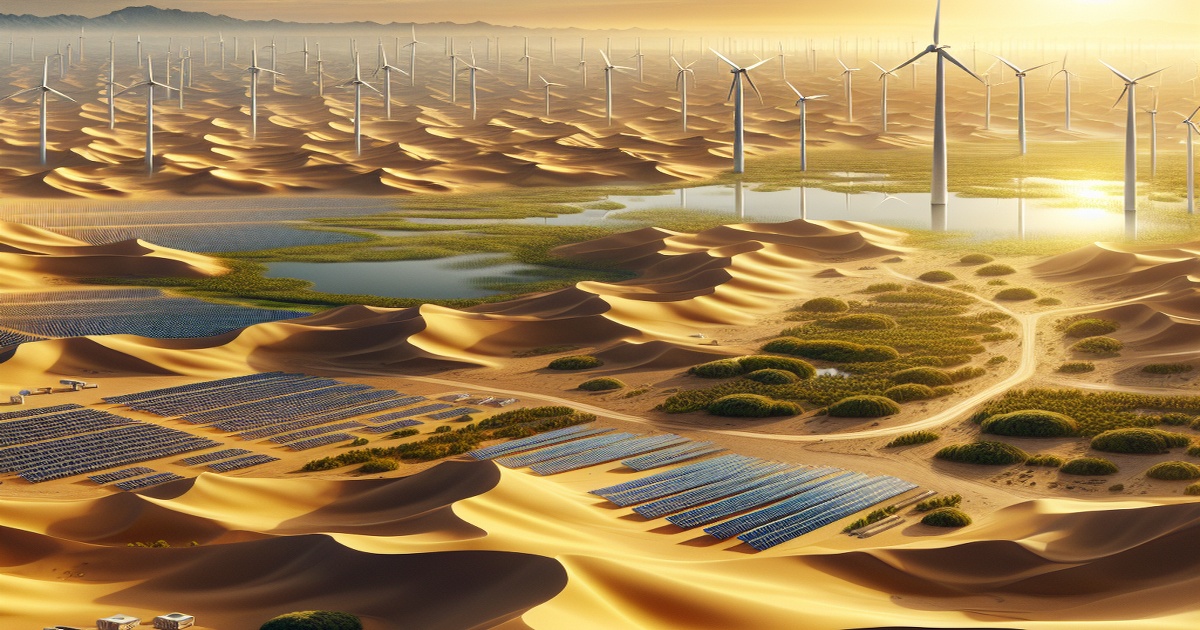Transforming Deserts into Renewable Energy Powerhouses
Deep within the Kubuqi desert, rows of blue solar panels stand tall, glistening under the winter sun. This isn't just a scene of futuristic technology; it's a testament to China's commitment to integrating renewable energy with ecological restoration.
Beneath the panels, a different kind of transformation is taking place. Shrubs stand tall, their dormant yellow leaves shielding the land from wind and sand. This is the first phase of the Kubuqi Desert Northern Ordos New Energy Base, a project that aims to turn 2,000 hectares of desert into a sea of solar blue, with thriving vegetation flourishing beneath the panels.
This ambitious project is just one piece of a larger puzzle. The base itself is set to become one of China's first large-scale renewable energy bases, with a capacity exceeding 10 gigawatts. It will combine solar, wind, and coal power, transmitting clean energy to the Beijing-Tianjin-Hebei region.
The impact of this project is far-reaching. It will deliver approximately 40 billion kilowatt-hours of electricity annually, with over 50 percent coming from clean energy sources. This translates to saving 6 million tonnes of standard coal and reducing carbon dioxide emissions by 16 million tonnes each year.
The Kubuqi project is a shining example of how technology can be used to combat desertification and create a more sustainable future. In Northwest China's Gansu province, similar projects are combining solar energy with afforestation, creating a synergy that not only restores ecosystems but also boosts local economic development.
Local villagers are finding employment in these initiatives, tending to the thriving sand plants and adjusting the sprinkler irrigation systems beneath the photovoltaic panels. For them, these projects are not just a source of income, but a meaningful effort that benefits future generations.
China's efforts to restore desertified land are paying off. Official data shows that 53 percent of the country's treatable desertified land has been restored, leading to a net reduction of approximately 4.33 million hectares of degraded land.
The transformation of the Kubuqi desert is a powerful symbol of hope. It demonstrates how renewable energy can not only power our homes and businesses but also heal our planet. As China continues to invest in these innovative solutions, the future looks bright for both the environment and the people who call it home.







8 Comments
Karamba
The fact that this project helps restore ecosystems while generating energy is absolutely amazing!
Matzomaster
I’m skeptical about the actual energy output. Such grand claims often fall short when the numbers come in.
Rotfront
How much water is being used for these projects? We're still in a water-scarce world, and this doesn’t address that.
Eugene Alta
Why invest so much in energy production when we still live in a throwaway culture? We should be focusing on consumption reduction instead.
Loubianka
China is just using this as a PR stunt to promote their clean energy efforts while still relying heavily on coal. It’s hypocritical!
Eugene Alta
Bravo to everyone behind this project! It’s proof that we can find ways to benefit both the earth and humanity.
BuggaBoom
This project will not only help combat desertification but also create jobs. It’s a win-win situation for the environment and the economy!
Barachiel
I'm thrilled to see China taking such bold steps towards renewable energy and ecological restoration. Keep it up!